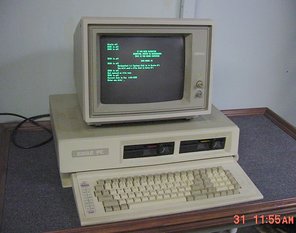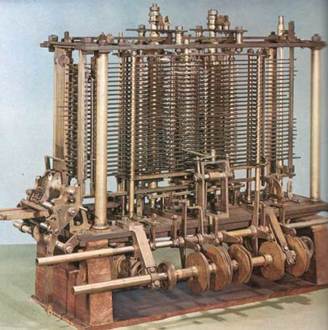 Arthur C. Clarke was right in saying that any sufficiently advanced technology is indistinguishable from magic. I think we’ve got there with computers. Stay with me – this requires some explanation. I was working with some students yesterday on the school computers. The school computers are not the most cooperative of machines, but with a little coaxing, they can be made to turn on.  The computer was continuously cycling through an attempt to load a restore key which I didn’t have. So while the students were watching, I rebooted the computer, cancelled the restore process, and when I got to a black and white screen, moved the arrow keys to restart the computer normally. So that’s the boring part. The interesting part was what my student said. She looked at me, smiled, and said that I was a “computer magician.” It should be abundantly apparent by the way I describe a computer rebooting that I am not a computer magician. Nor am I, in the vaguest sense, any kind of programmer. Yet as a grade six and seven teacher, I am continuously struck by how little many of my students know about how to use a computer, never mind what’s inside it. This seems counterintuitive. They are digital natives, aren’t they? They are surrounded by sophisticated electronics – they use computers regularly in school, and almost all of them use one at home. What is strangely sad about this is that because computers have become so sophisticated, and because the layers between the user and transistors have become so dense, most of my students have less of an understanding of computers than a previous generation, not more. For them, computers may as well be magic. It is striking to think of how much this is true. In my novel, The Steel Lady, I feature the Analytical Engine, a mechanical computer designed in the 1830s, that was designed by Charles Babbage. Though the machine itself was never actually built, Ada Lovelace created what we might now call code for it. It is clear from our attempts to build pieces of Babbage’s Engine that both he and Ada Lovelace had a greater understanding of computing than most of our population today, in spite of the fact that the computer had never existed. As ubiquitous as computers are, this strikes me as a problem we can’t afford to ignore. We think that we’re creating children whose familiarity with computing and electronics makes them innovators and designers – it doesn’t. What it does is make them reliant on electronics, and make them unable to solve the problem when one arises. The answer doesn’t seem to be to give them more sophisticated computing tools – it is to give them less sophisticated ones, computing tools like Arduino and RaspberryPi, that strip the magic away. “But how will we interest them? They are digital natives, after all!” So? They’re still kids. What they crave isn’t electronics, it’s stimulus. And that doesn’t need to come merely from YouTube. They still read, and love, paper books. They still collect and sort chestnuts and rocks – yes, even at age 12. They still get genuinely and obsessively excited when I teach them to knit as part of our Applied Skills class. Why? Because they can see themselves create things, things that are not, even on the surface, mysterious in any way. If they do become innovators, it won’t be because they are digital natives. It will be in spite of it.
0 Comments
Leave a Reply. |
Author
Jane Perrella. Teacher, writer. Expert knitter. Enthusiast of medieval swordplay, tea, Shakespeare, and Batman. Archives
June 2019
Categories |
 RSS Feed
RSS Feed
